It was a delight to meet up again, and to share the family stories from the past year. Our plan was to be up at 0500hrs next morning and drive to the radio shack where the Mornington Station road departs the Gibb River Rd. Their office opens at 0730, so people queue at the radio as early as possible to be advised if they can proceed the two hours drive that it takes to get to the place. We were head of a group of about six wanting access. The journey in started with some excitement when out of the dust cloud ahead I saw Bill running back towards us, arms waving and fingers pointing. There on the side of the road and in danger of being driven over, was the largest King Brown snake (the only King Brown snake) we have seen. It WAS big, and of course everyone pulled up behind us wanting to take photographs of one of Australia's most aggressive and poisonous snakes. As the Tvan owner drove past it had a good lunge at the tyres. Bill is a bushman and just wanted to make sure noone drove over the snake, but I think some amongst the group might have thought the best thing would be to do just that!
Mornington Station is now owned privately by the Australian Wildlife Conservancy Trust, and has
been for some years now. Until the 1990's it was one of the larger cattle stations and had been run that way for many decades. Now it has been mostly de-stocked and great efforts are being made to measure and evaluate the country as it reverts to something closer to its proper state. There is no doubt that cattle destroy this fragile country, miring the waterholes, spreading weed species, and eating out the native and more succulent grasses. The AWC activity takes place alongside tourism, and they make the most of the education opportunity this offers. They do things differently and run programs that help establish better ways of managing. A good example we saw is feral cat control: cats being responsible for most of the native species destruction. Where pest management on surrounding cattle stations focuses on killing dingoes, at Mornington the dingoes are tagged and numbers encouraged because they are the only natural predator the cat has. At Mornington native species are bouncing back. Fire management is another example of applying a different philosophy and coming up with beneficial results.
Mornington has many delights, amongst which is the Dimond Gorge - a broad gorge on the
Fitzroy River that arguably surpasses even Katherine Gorge in the Northern Territory. We took a couple of canoes for the day to enjoy our lunches up stream. Three nights we had there, and as our fridges began to play up (not being on mains power) and supplies were running low we had a final special birthday dinner at the excellent restaurant under the stars, to celebrate Helen's 64th. Not many better ways to spend a birthday.
Getting fuel on the Gibb can be interesting, and the word was that Mt Barnett Roadhouse had
run out, so we back racked 25kms and refuelled at Imintji aboriginal roadhouse.This gave us enough range to do the various side trips that are on offer when you stop at the privately owned properties. We parted company with our dear friends and only four kilometres past the radio shack turn off to Mornington we turned off northwards to Charnley River Station. This is a "traditional" cattle property with many kilometres of good private roads and several gorges and waterholes, some with examples of rock art that had Helen's blood pressure up. There were two young helicopter pilots there, one a very shapely (what a lovely term!) 30 year old blonde woman, the other her partner? We were woken at 0530hrs as they each warmed up their helicopters, and in synchrony blasted their way through the camp ground a couple of metres above the ground at about 100 knots, before soaring up over the trees two hundred metres away and off for a day’s mustering.....as you do.
We had two nights there and then eased our way further east to Mt Barnett and Manning Gorge. This is a spot I don't know how we missed two years back. We were able to top up with fuel and then went the few kilos to the Manning Gorge camp site - large and many many people camped there. It was a delight to find John and Del Cutler and their two boys who we had met back at Lawn Hill earlier in the first part of our tour. We pitched up next to them and shared the journeying over a fine Del risotto. The gorge is a sensation and well worth the broad creek boat crossing and hour walk to get there. There is even a little Gwion Gwion rock art if you have your eyes peeled. Large numbers of happy campers get a bit ordinary so after our walk with John & Del we packed up and moved into Mount Elizabeth Station 60 kms further east.
Owned by the Lacy family since first settled in 1946, this property again runs cattle, but is largely destocked due to the poor wet season in the west Kimberley this year, and the state of the beef market. We were especially grateful for the opportunity to see some wonderful rock art, similar to that we saw two years ago at King Edward River further east. There are rock holes and waterfalls with sandy beaches that frankly better any holiday resort. And we were fortunate to be the only people at all of the lovely spots we visited. These private places are good because, whilst they are some kilometres from the main road, numbers are low.
Tuesday, August 10, 2010
Subscribe to:
Post Comments (Atom)







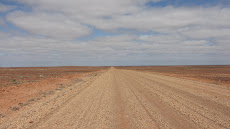
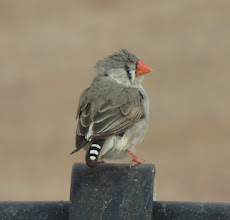
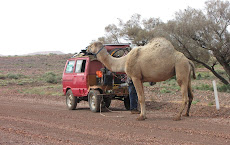
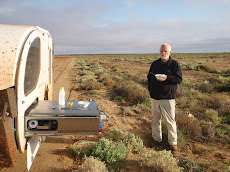
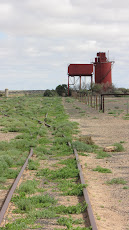
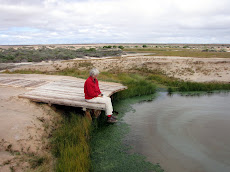




















































































No comments:
Post a Comment